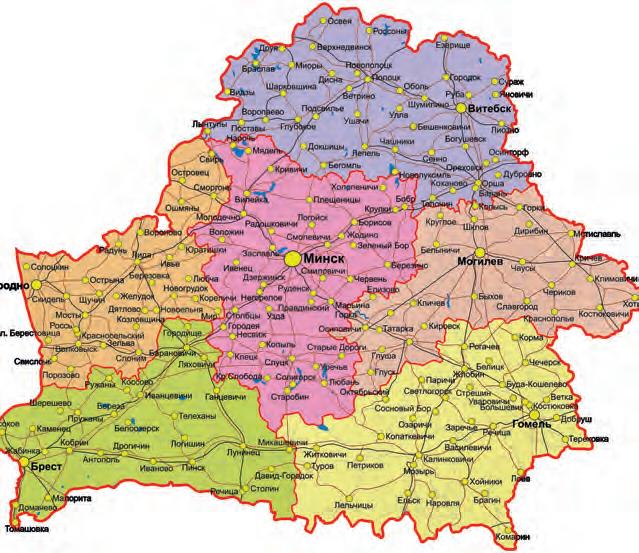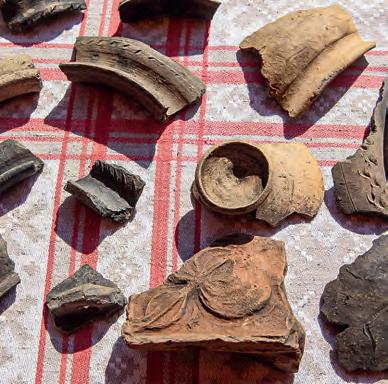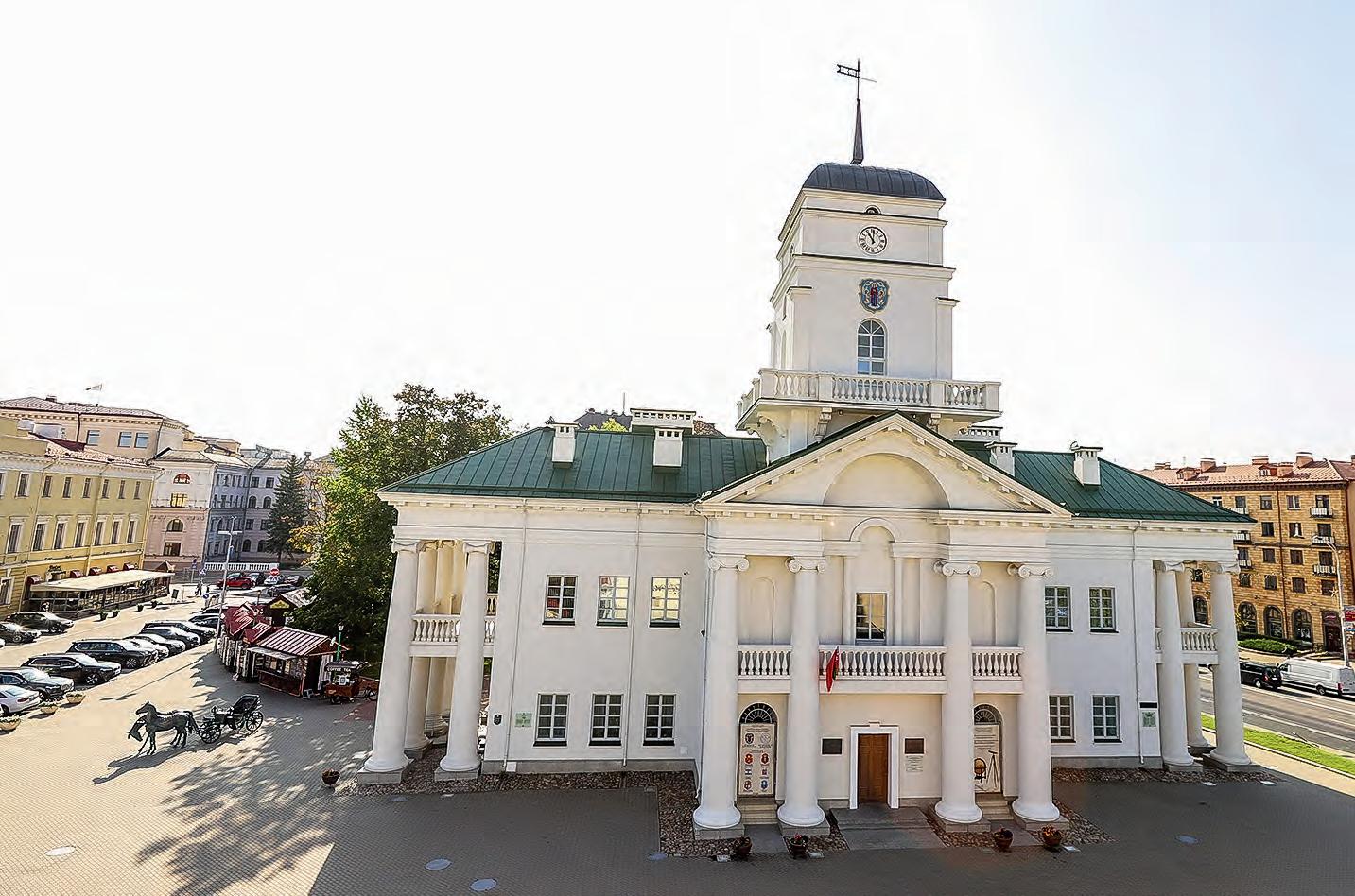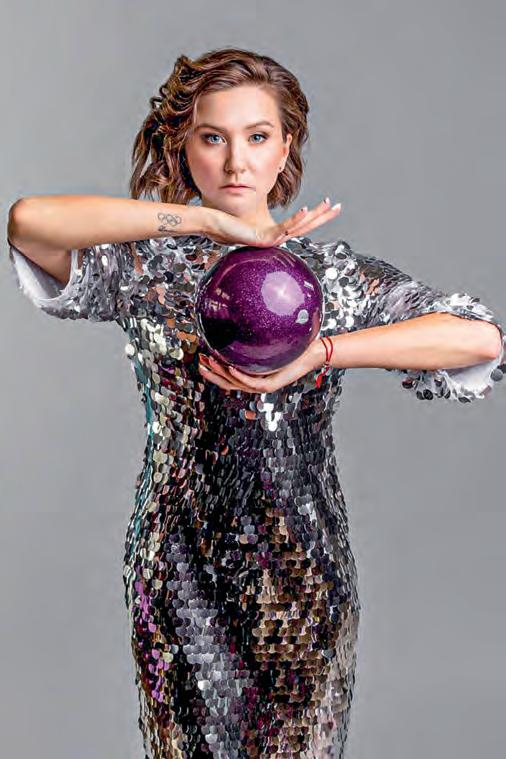
12 minute read
Join memory return
Five unexpected facts about the film “Farsi Lessons”: what makes this film special?
Last year the film “Farsi Lessons” appeared at the Berlinale and the Moscow Film Festival, and if not for the pandemic, it would have declared itself at dozens of film festivals around the world and gathered viewers in cinemas… It is the result of coproduction of Russia, Germany and Belarus. The film was shot by an American director who was born in Ukraine, Vadim Perelman. Filming took place in Belarus. The plot is one that compels
Advertisement
REZKA.AG comparison with such world famous films as “Schindler’s List”, “The Pianist”, “Life is Beautiful”. The Holocaust. Fascism. Victims and executioners. Humaneness and inhumaneness. And the issue of historical memory, which is extremely urgent for Belarusians.
Well, let’s remember what makes this film special.
1. The screenwriter found the plot at the age of fifteen
Ilya Tsofin, a Russian screenwriter, says that he found the plot for this film when he was fifteen years old. He read a Soviet magazine — he can’t even remember exactly which one, perhaps “Around the World”. There he had read a story about a Jew, a prisoner of a fascist concentration camp, who in order to survive, passed himself off as a Persian and taught the Persian language to one of his guards, not knowing it himself, inventing it as he went along. That story stuck in his memory, the character aroused admiration — you have to be almost a genius to be able to make up a believable language like that, to keep the words and rules in your memory so that you don’t get disclosed…
As time passed, the famous screenwriter Ilya Tsofin wrote a screenplay based on that story. The famous producer and director Timur Bekmambetov became interested in it and started negotiations with the studios. As Tsofin told Berlin radio, however, the famous film studio made it a condition that he had to provide proof that the story was real! The screenwriter searched through all the Soviet journals in Moscow’s Leninka. He could not find the publication that had got into his memory when he was a teenager. He hired someone to continue the search — in vain. And then it turned out that the story had literary origins, i.e. namely, a retelling of a story by the GDR writer Wolfgang Kalhaase “The Invention of Language”, which can sometimes be found under the title “Persian for Capo”. The copyright was bought, but Kalhaase claimed that it was based on a true story!
Tsofin gave the story its own flair. The Belgian Jew Gilles Kremier, along with the other victims, was driven in a truck to the execution site. In the truck, one of his fellow victims exchanged a sandwich for a book of Persian fairy tales. It was this book that
would save Gilles’ life, it served as a confirmation that he, swarthy and big-eyed, was not a Jew but Persian. And the head of the “food section” in the concentration camp, the cook Klaus Koch, just needed a Farsi teacher — Klaus dreamed of opening a restaurant in Tehran.

2. The shooting locations were the Bobruisk fortress and the Mikashevichi quarry
The name of the concentration camp where the action was taking place is very provisional in the film — “Jedem das Seine”, translated as “To each their own”. And the specific place remains on a symbolic level, “somewhere in Europe”, which means it could have taken place anywhere. But the shooting took place mostly in Bobruisk, and the locals were involved in the crowd scenes. The base for the extras was located in one of the buildings of the Bobruisk fortress. The residents of Bobruisk turned into prisoners with yellow stars on their chests and their escorts; they were joined by residents of Minsk, Osipovichi and Zhlobin who also wanted to take part in the shooting… Some scenes were filmed in the forest near the village of Dumanovshchina. There were some shootings in the quarry in Mikashevichi that belongs to “Granite” enterprise. By the way, directors love to shoot films there — it is atmospheric, picturesque… Depth of a hundred meters, rocks, stones, waterfalls. As if it is not in Belarus. The concentration camp “prisoners” worked there using wheelbarrows and hammer picks. By the way, they say that the pieces of scenery used during filming can be seen today in the Bobruisk fortress — they were presented to the city.
3. A real unique language was invented for the film, based on the names of Holocaust victims
The thing that broadens the film beyond the genre and turns it into a philosophical project, is that a non-existent language, fake-Farsi, was specially created for it.
Everyone knows Esperanto, invented by the Polish ophthalmologist Zamenhof. But there were fictional languages in history that were passes off as existing one, e.g. conlang. In the 18th century, there was the adventurer George Salmanazar, who posed as a native of the island of Formosa — Taiwan. He was even hired by Oxford University to translate religious literature into Formosa (which Salmanazar did not know). And he did! On the net one can find the prayer “The Lord’s Prayer” in the Formosan language translated by Shalmanazar. The most famous, however, inventor of non-existent languages is Tolkien, the author of Hobbits and Elves. An accomplished linguist, he invented 15 languages spoken by the peoples of the fantasy environment for his literary project. Two of them, Quenya and Sindarin, the language of the Elves, Professor Tolkien developed to such an extent that even today it is possible to learn them and communicate in them with the same “Tolkienists”. Burroughs invented the monkey language Mangani, spoken by Tarzan. Richards Adams, in his fairy tale “The Hill Dwellers”, developed a language “lapn” for his characters, in Jonathan Swift’s book Gulliver in the Giant’s Land had to learn the local language “guingnm”, which had no words for human faults. Tolkien, incidentally, in 1931, prepared a paper on how to construct languages correctly. There are three necessary points to keep. Language needs history. Language needs to be aesthetically pleasing to the ear. Language needs grammar.
The filmmakers were enthusiastic about the creation of pseudo-Persian. A young linguist from Moscow State University, Anton Kirov, was hired to develop fake-Farsi according to all the rules. There’s grammar, orthography, and a dictionary of six hundred words. It is true that in the film it is said that under the guidance
KINONEWS.RU

of Gilles, Koch learnt two and a half thousand words of fake-Farsi. It is within the artificial language that the concentration camp cook and the prisoner can go beyond the scope of their roles. Koch writes poems in fake-Farsi. “I love you” in this language sounds like “Or bar onai au”.
And a surprising detail: to create the language, Gilles uses the names of the concentration camp prisoners from the ledger he was assigned to keep. In this way he turns the artificial language into a
huge memorial. And at the end, when, with Koch’s help, he manages to escape and is taken to antifascists, he is asked if he can remember the names of any of the victims of the camp, Gilles answers that he can remember 2840 names. The entire vocabulary of pseudo-Persian.
And the filmmaker also made such a memorial in life, suggesting that the linguist should use the actual list of names of Holocaust victims when making up words. These are already Borgesian constructions: as long as Klaus Koch believes he knows Farsi and speaks it, the names of those murdered will be heard.

KINONEWS.RU
4. The director accidentally caught the Bobruisk fog
The people of Belarus who took part in the shooting were looking forward to the mass release of the film despite the pandemic so they could recognize themselves in the impressive footage. The nature of Belarus is recognizable there, too. Although, thanks to the “magic crystal” of art, it is sometimes difficult to do it. For example, there is a scene in the film when Gilles, accompanied by his camp escort, goes out to throw out the rubbish, and everything is obscured by an almost surreal fog. When Vadim Perelman was asked in Rossiyskaya Gazeta how he managed to achieve such an effect, he replied: “It was a miracle. We were shooting in Bobruisk and we had other shoots scheduled for that day. In the kitchen. While everyone was getting ready for them, I went out for a smoke. Looked at this road. And there behind the trees, about 20 meters away, there were the “soviet” garages that had been there since the 1960s. They were orange and red — we didn’t even point the camera there, we didn’t see them. So I went out and looked at them… and I was stunned. I quickly ran to the radio: “Everybody, over here! Get the camera over here! Where’s the barrel?” The waste barrel wasn’t even supposed to be in the shot that day. I said, “Hurry up, find it, fix the wheels. It will all be gone soon!” The costumes were differ-
KINONEWS.RU ent too… Everyone was running around. It was the beginning of the shift — seven or eight in the morning. By 10 or 11 we’d filmed everything. And usually fog is dispelled by the sun. But it stayed there all day. And then we also filmed two scenes on the parade ground — when the soldiers are walking away in the morning.”
“Very lucky” is how the director describes his affair with the Bobruisk fog.
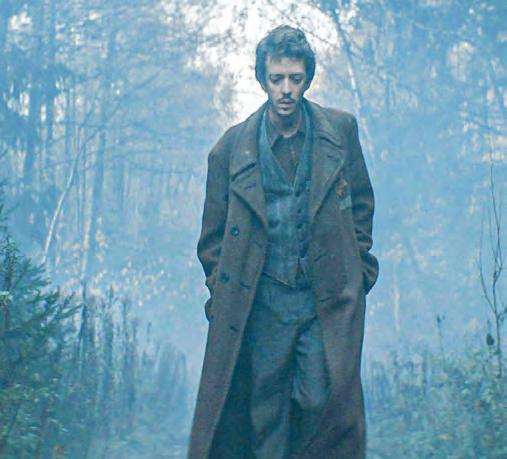
5. The script was written in Russian, translated into English and German was used on set
The language issue and preservation of the historical memory are painful and topical for the Belarusians at all times. How many times we were forced not to be ourselves, the Belarusian language was concealed, we were ashamed or afraid to use it… On the other hand, here, at the crossroads of European routes, cultures and confessions met, were used in the same places. This multiculturalism was also formed on the set of “Farsi Lessons”. As already mentioned, the film is a project of three countries and the director is an American of Ukrainian origin. The cameraman Vladislav Apelyants is from Russia, the performer of the role of Gilles Nahuel Pérez Biscayart is Argentinean and the performer of the role of Koch is German Lars Eidinger. The script was originally written in Russian by Ilya Tsofin. Subsequently, it was translated into English. But on the film set, mostly German was used. We know about the presence of Farsi. The main theme is the Holocaust, the fate of the Jews. But Vadim Perelman says the film is about human interaction and trust.
And the filmmakers also wanted every viewer to memorize at least one word of Gilles’ fictional language — so as to join the commemoration. By Lyudmila Rublevskaya
LOCAL JERUSALEM

“Local Jerusalem” exhibition of Jewish cultural objects opened in Minsk
The Mikhail Savitsky Art Gallery has launched an exhibition of items of Jewish culture “Local Jerusalem”. The exhibition features dozens of silver items as well as other 18–20th centuries exhibits from the private collection of Igor Surmachevsky. One of the most valuable rarities is a herbarium with herbs and flowers from Jerusalem which dates back to 1890. Pilgrims used to bring such souvenirs from the Holy Land. And this rarity was kept in an orthodox family. Yes, things do tell us that peoples interacted. And studying different cultures gives us a better understanding of our shared history. — My childhood was spent in symbiosis with different traditions. Among my relatives there were Orthodox, Catholics and Jews. Naturally, it was reflected in my collection, which is called “History of Belarus”. Today only a small part of it is exhibited,— Igor Surmachevsky said when opening the exhibition.
Since the 16th century Jews started to settle down in Belarusian towns and villages in large numbers and had a great influence on the local life: they were engaged in various kinds of crafts and trade. In Minsk, for example, at the beginning of the 20th century, they headed many bank offices, founded industrial enterprises, and owned the majority of hotels. Nonetheless, they continued to preserve their culture, language, and religion.
By the beginning of the Second World War almost half of the population of the capital was Jewish, and they lived in different parts of the city. The items in the exhibition offer a glimpse into their homes and traditions.
The core of this collection is a collection of silver kiddush cups. More than a hundred of them are exhibited. On Fridays, wine was poured into such ritual cups (it was believed that it should be poured to the brim of the cup, because it symbolized prosperity). The ritual kiddush, thanking God for the forgiven feast days and the Sabbath, was performed in every Jewish home or synagogue.
It is worth taking a closer look at the patterns on the kiddush cups — on them the craftsmen carved a cityscape. Such images on cups are typical of our lands, while in European museums kiddush were mostly decorated with plant ornaments or sacred animals, which numbered twelve. Masters often tried to depict Jerusalem as they imagined it to be, since many people had never been to the city and had never seen even the pictures of the city. That is why artists created their own Jerusalem on kiddushs, reflecting familiar urban landscapes. By the way, an 18-century engraving that shows what Jerusalem looked like, can also be seen at the exhibition. It’s impressive to see how the craftsmen meticulously made to fine limits the finest detail of the intricate designs on the silver tableware. Cityscapes, images of synagogues, could be found on sugar bowls, decanters, plates and butter dishes. The heyday of this art came in the middle of the 19th century and after the persecution of Jews in the 1880s it all went downhill.
The tableware produced by Belarusian craftsmen was in great demand far beyond the borders of our cities. Unfortunately, the names of those craftsmen are forgotten today. Although, at the same time, they can be valued by our neighbours. For instance, the jeweller from Shklov, Israel Yoselevich Zakhoder. In 1851 the master from the Mogilev District opened his workshop which fulfilled mainly Moscow orders. Naturally, after the Jews were allowed to overcome the border of sedentary life (provided they were merchants of the first guild and owned the sum of 50 thousand rubles), the master moved closer to his clients. In the workshop, which he opened in Moscow, 40 people worked. The demand for the crockery it produced was growing. But in 1881, by order of the new governor-general, Jews were banned from Moscow and Moscow province, and within 3–12 months were ordered to leave these territories. Then the master moved to Ukraine, near Berdichi. The items made by Zakhoder’s were awarded at international exhibitions, and goods from his factory were exported to Turkey and Austria-Hungary…
The Torah at the exhibition is arranged according to tradition. In the synagogue, for example, the holy book of the Jews was placed facing south, towards Jerusalem.
ETHNOMUSEUM.RU
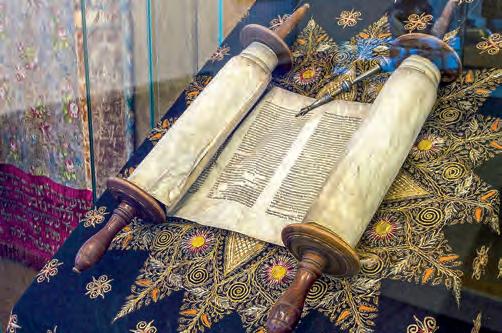
The Torah was placed on expensive fabrics (including Persian carpets). And when stored, it was covered with expensive material (it could be makats or, as Igor Surmachevsky found evidence in Polish archives, Slutsk belts).
Another rarity tells us that Jews paid special attention to education. There are tzedakah boxes, i.e. money-boxes, at the exhibition. They were given to adolescents when they turned 13 years and one day. Young people used them to collect money for their education.
A separate section of the exposition is dedicated to everyday culture of Minsk Jews — there is a kitchen, copperware and an interior installation. By Elena Dedyulya


